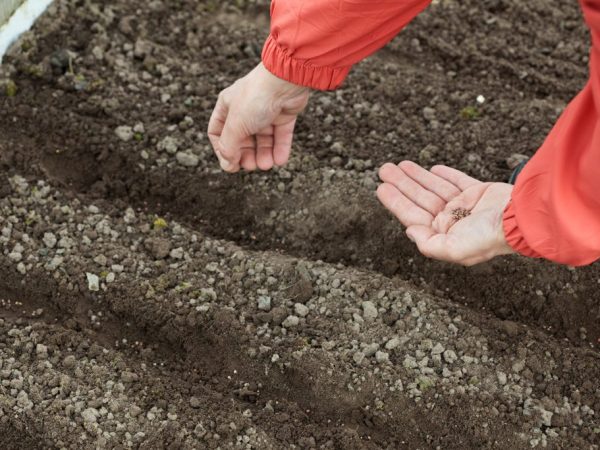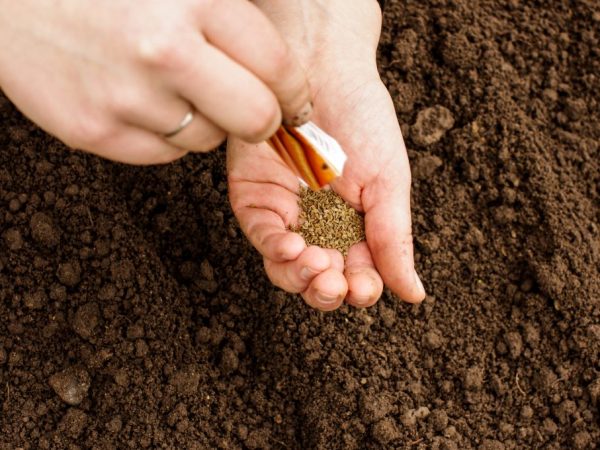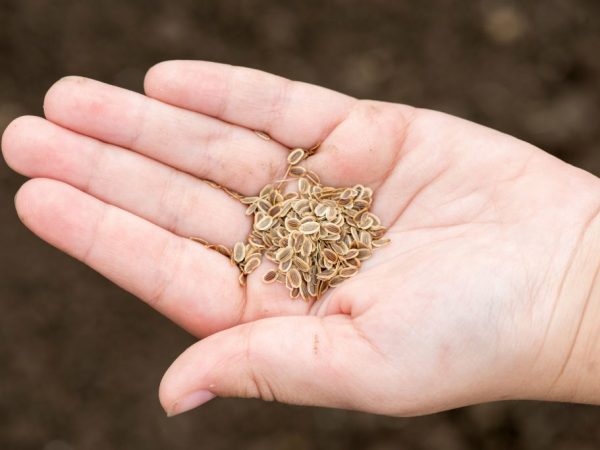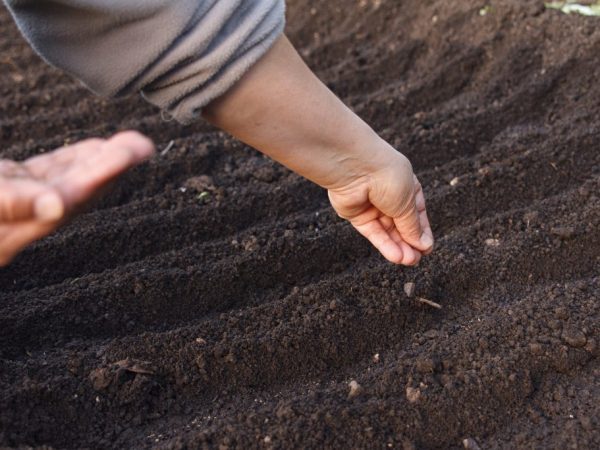How to sow carrots outdoors in spring
A garden crop such as carrots is planted by almost every gardener. Despite the fact that this is an unpretentious plant, in the process of growing and planting it requires competent care. The quality and quantity of the future harvest depends on how correctly carrots are sown in open ground in spring.
- Lunar landing
- Influence of the growing region
- Best Progenitor Plants
- Landing technique
- Presowing seed preparation
- Preparing the beds
- Landing methods and schemes
- Disembarkation
- Wet seeds
- Mixed with sand
- Using toilet paper or tape
- In granules
- With other vegetables
- In egg cells
- Sowing rules
- Shelter
- Care features
- Watering
- Fertilizers
- Loosening
- Weeding
- Thinning
- Diseases and pests
- Conclusion

How to sow carrots outdoors in spring
Lunar landing
When planting crops, they are often guided by the climatic conditions and the growing region, and also rely on the sowing dates according to the lunar calendar.
For 2018, for sowing carrots in the spring of March, the following numbers are suitable: from 19 to 24, as well as 27 and 28. Auspicious days in April are 1, 13, 16, 17, 18, 23, 27 and 28. In May, there are several favorable days for sowing carrot seeds according to the lunar calendar: 4th, 7th, 9th, 15th, 19th and 24th. For a late harvest, carrots should be sown in June (from 4th to 8th, 18th, 19th and 20th).
In addition to favorable days, attention is also paid to the days of the week. Planting carrots in the spring is advised only on women's days of the week.
Influence of the growing region
To get good crops and a high-quality harvest in the future, they are guided not only by the timing, but also by the growing area. In the southern regions, this procedure is carried out much earlier than in the regions of the middle and northern strip: immediately after the snow melts.
In the regions of the middle belt, sowing of carrots in open ground in spring is carried out at a later date - in the last decade of April or in the first decade of May at an air temperature of 10 ° C-15 ° C.
In the North, planting is carried out later - in late May and early June. This is due to the fact that snow melts for a long time in the Urals and Siberia.
Best Progenitor Plants

Choosing a landing site
It is important not only to properly plant carrots in the spring, but also to choose a suitable site for this. There are several garden crops, after which the vegetable grows well and gives a high-quality harvest:
- cabbage;
- bow;
- cucumbers;
- tomatoes;
- potato;
- salad.
You cannot plant carrots after parsley, dill and parsnips, because the soil from under them contributes to the appearance of pests and diseases that affect carrot seedlings.
Landing technique
In order for the planted seeds in the country to grow together and develop fully, several preparatory measures are taken.
Presowing seed preparation
Carrot seeds sit still for a long time and do not hatch. The essential oils in the seeds impede the passage of moisture to the embryo. If dry seeds are used when sowing carrots in the spring, the first shoots, at best, will not sprout earlier than 3 weeks later.
The germination process is accelerated in two ways:
- For successful sowing of carrots in the open ground in spring, the seeds are soaked. The seed is immersed in water for an hour, then placed in a damp cloth. A bag of seeds is immersed in a container with water at room temperature. To prevent the risk of mold, add 1 tsp to the water. wood ash per 0.5 l of water. Duration of seed soaking is 2-3 days. During this time, the seeds should hatch.
- Another effective way to prepare carrots for planting in spring is to place the seeds in a cloth bag, bury them in the soil in early spring, and sprinkle them with snow. At this time of year, the land is still damp and cold. In conditions of low temperatures, the seeds will not only swell, but also undergo a natural process of stratification, which will significantly increase their immunity. The time of keeping seeds underground is 2 weeks. They are removed on the day of the intended planting, dried and sown on the garden bed. After being kept in such conditions, the seeds will germinate after a week.
Preparing the beds
Preparation of the site for sowing carrots in open ground in the spring is carried out in the autumn.
The crop grows well on fertile, light and loose soil with neutral acidity. Under the autumn digging, 2 components are added to the shovel bayonet: wood ash (400 g) and rotted manure (compost) - 1 bucket per 1 sq. m area.
This is a sun-loving culture, so it is sown in a sunny area where there is no shade. Otherwise, the sprouts will stretch out, and in the future you will have to wait for a meager and low-quality crop of root crops.
Landing methods and schemes

We carefully plant in rows
Planting carrots in the open ground in spring is carried out in several ways.
Disembarkation
Planting dry seeds in the ground is carried out in pre-prepared grooves. The disadvantage of this method of seeding is that the seedlings germinate for a long time, and the crops are unevenly distributed.
Wet seeds
The seeds, soaked in water and aged in a humid environment, are sown on the beds in the grooves. The seedlings are regularly moistened, otherwise such planting of carrots with seeds in open ground in the spring becomes unsuccessful: the seeds dry out without hatching.
Mixed with sand
The seed is mixed with sand - 30 g of seeds per 1 liter of sand. Then they are sown in pre-prepared grooves in the garden bed. After that, watered abundantly.
Using toilet paper or tape
The tape on which the seeds are placed is moistened with an adhesive: 2 tbsp. l. starch is stirred in 200 ml of water. The seeds on the tape are distributed at a certain distance. It is laid on the garden bed and sprinkled with soil. The advantage of this method of planting carrots in open ground is the even distribution of seeds.
In granules
Planting carrots in granules is one of the most modern methods used by gardeners. There are several advantages:
- granular planting material is easy to use;
- granules are large in size, bright in color, which facilitates the sowing process;
- seeds have almost 100% germination.
The granules are laid out at a distance of 5 cm from each other in grooves, sprinkled with sand and watered abundantly.
With other vegetables
You can sow carrots in combination with the seeds of other vegetables: beets, onions, garlic. Seeds are planted at a distance of 5-7 cm from each other into grooves with a depth of 2-3 cm.
In egg cells
In each egg tray, the bottom is cut off so that the root system can fully develop. Egg cells are placed in dug grooves about 10 cm wide. 1-2 seeds are sown in each tray, sprinkled with earth and watered abundantly.
The advantage of this method is that the tray prevents the growth of weeds and the evaporation of moisture from the soil. Both plastic and cardboard cells are used.
Sowing rules
After the preparation of carrot seeds for planting in spring is completed, they begin the planting process. It is best to plant seeds with tape.The seeds are spread on an adhesive strip at a distance of 2-3 cm from each other.
If planted thicker, the seedlings will have to be thinned repeatedly. Planting carrots in the spring is to a depth of 1.5-2 cm. Before sowing, the soil is spilled with hot water and sprinkled with wood ash. A ribbon with seeds is laid on top. A distance of at least 20 cm is maintained between the grooves.
The seeds are sprinkled with soil, lightly pressed with the palm of your hand. It is advisable to plant carrots in spring in warm, sunny and calm weather.
Shelter
The crops are covered to speed up the seed germination process. A plastic film or agrofibre is suitable as a covering material. As soon as the seedlings germinate, the shelter is removed, otherwise the sprouts will rot.
Care features

After planting, you need to water
It is important not only to correctly plant the seeds, but also to provide them with correct and timely care in the process of growth and development.
Watering
Despite the fact that the culture is drought-resistant, without the necessary amount of moisture it will not give a high-quality and juicy root crop. It is worth watering the carrots regularly after each drying out of the soil. The soil is saturated with moisture until it becomes wet to a depth of 15-20 cm.
The first watering is carried out immediately after planting the seeds. Plants experience an increased need for moisture during the growing season and root crop formation. If watering is insufficient, the plants will grow deformed, and the fruits twisted and with a large number of thin roots.
Fertilizers
The first and last fertilizing for the culture is applied in the fall, in the process of preparing the site for sowing. Fertilizing plantings would be a big mistake. Carrots are capable of accumulating nitrates, therefore, additionally applied fertilizers will only spoil the harvest and become a source of breeding for pathogenic microflora. For example, parasite larvae grow in rotted manure or compost.
Loosening
Loosening is included in the basic rules for carrot care. It increases the moisture and air permeability of the soil, and also prevents the formation of a crust on its surface.
The manipulation is carried out the next day after each watering.
Weeding
Killing weeds and keeping the plantings clean prevents the invasion of parasites and the development of many diseases. Deep weeding is necessary to protect the surface of the root crop from exposure to sunlight.
Thinning
The thinning procedure is carried out in the case of a strong thickening of crops. It is carried out before the formation of the root crop. If thinning is carried out later, the risk of damage to strong shoots when removing weak ones increases. The result is deformed plants and roots.
To avoid the thinning procedure, the seeds are planted at a distance of 2-3 cm.
Diseases and pests
The most dangerous pest of carrots is the carrot fly. This parasite lays eggs in the soil next to developing root crops. The eggs hatch into larvae, which gnaw holes in vegetables. Affected root vegetables become unsuitable for human consumption.
It will be possible to prevent the appearance of the pest by alternating crops of carrots and onions. The most dangerous pest of onions is the onion fly, which cannot stand the rich aroma of carrot tops. The carrot fly, on the other hand, cannot stand the smell of onions. In this way, it will be possible to avoid an invasion of 2 parasites at once.
The carrot beetle is another parasite that sucks juices from plant leaves. Plants affected by this pest dry out quickly.
Preventive measures:
- planting several mustard seeds on the site;
- alternating planting of onions and carrots;
- mulching the garden with fresh sawdust.
Phomosis, or dry rot on carrots, is not uncommon. The disease affects root crops. Not subject to treatment. For the purpose of prevention, plant residues are removed from the site in time. Before sowing seeds, phosphorus-potassium fertilizers are applied to the soil.
Conclusion
Sowing carrots in your country house in really different ways. The main thing is to comply with all the rules, terms and planting scheme, as well as to provide the seedlings with competent care.


